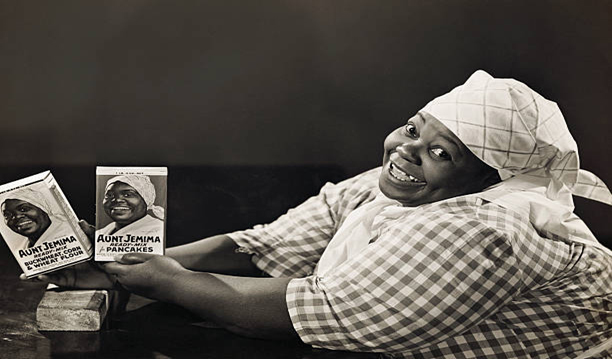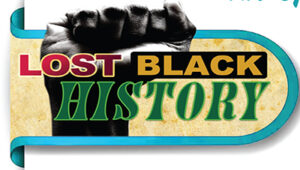By Don Valentine
Aunt Jemima was the perfect “Nod and a Wink” to snare the hungry fans of the prewar, antebellum lifestyle. The overweight, dim witted and just happy to feed her master’s family, she had become a rote character of minstrel shows. Britttanica notes, “The name came from a minstrel song dating to 1875 called ‘Old Aunt Jemima,’…” In 1889 one of the founders of the pancake mix heard it. He made a winning gamble on the myth of a loyal servant making flapjacks for her owner’s family. Britannica wrote, “The image was that of what has been called the ‘Mammy’ a popular trope of an enslaved older Black woman who cooked and cleaned for her White owners, apparently quite content with her lot in life. The image did not materially change following Black emancipation: it was represented by a dark-skinned heavyset woman of indeterminate middle age who wore an apron and a bandana as a headscarf. With a broad smile and exaggerated teeth and lips, the ‘Mammy’ figure was a staple of blackface vaudeville, a simpleminded character whose domain was the kitchen.”
The original creator of the pancake mix was Pearl Milling company and they sold it to R.T. Davis Mill and Manufacturing Company. They not only retained the name “Aunt Jemima” but went so far as to have a Black woman personify the role. This role was played by Nancy Green, who had been born into slavery in Kentucky. Her first big representation of the brand came at the 1893 World’s Columbian Exposition, where she made pancakes and told scripted nostalgic stories about the Old South. The colorful stories were all fiction, but the mostly White audience loved her narration. Nancy stirred batter and prattled on about the good old days on the plantation. Her earthy rendition was so strong the company was renamed to Aunt Jemima Mills in 1914.
That caricature remained for over 127 years until global criticism over the racial stereotyping forced Auntie J. into retirement. Over those years racial awareness became more progressive and so did the character. After Nancy Anna Robinson, who played the role from 1933 to 1951 and weighed about 350 pounds, and Aylene Lewis, who played the role at the Aunt Jemima Pancake House at Disneyland, where Auntie J.’s slaveholder, Colonel Higbee, was also a fixture.
Quaker Oats Company redrew the mammy image of Aunt Jemima in 1968 with her bandana replaced by a plaid headband, her face somewhat slimmed, and her skin lighter in tone. In a second revision in 1989 the character lost her headband entirely and wore pearl earrings and a lace collar, her hair slightly gray. Desperate to shirk the racial clouds, Gladys Knight was hired to be a spokesperson, promoting the line in the role of a modern working grandmother. That “Hail-Mary” did not cleanse the negative imagery of an outdated relic.


